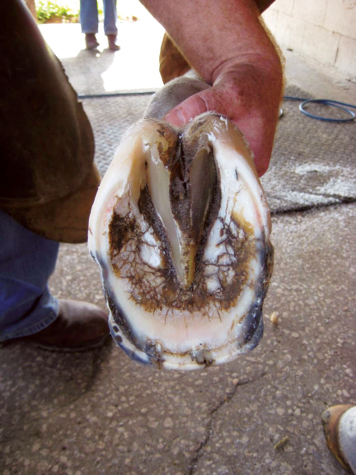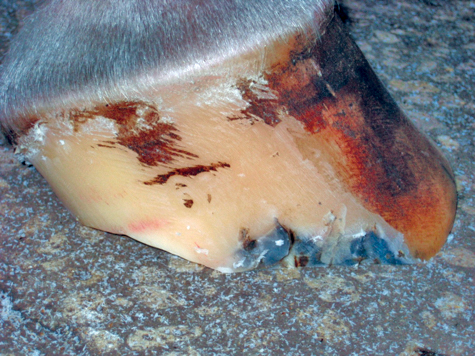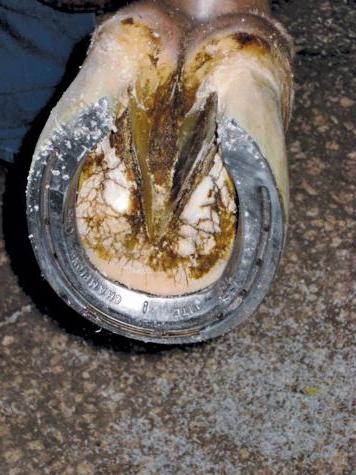A previously sound horse came back in bad shape after being sold.
Even though one foot had a slightly narrower heel than the other, the hunter had gotten along fine with normal shoeing. But when the horse came back after being sold, the hoof walls on both sides were in bad shape and he needed to be provided with a better stance.
Tom Curl stresses the importance of leaving only tight hoof wall when using glue-on shoes.

This hunter's torn-out walls called for glue-on shoes.
“If you leave loose material, you won’t have a successful glue job,” says the veteran farrier from Vero Beach, Fla. “Skin these old nail holes down with your Dremel tool or whatever you use.”
He glued on a Lite Champion shoe that is commonly used on hunters.
“They told me that the next morning, this horse was bucking, jumping, playing, happy and didn’t hurt anymore,” Curl says.

Glue-on shoes adhere best when all of the loose hoof wall has been removed.

The finished hoof wall was built up to provide more effective mediolateral balance. The glue-on shoe allowed the wall more time to grow back.






